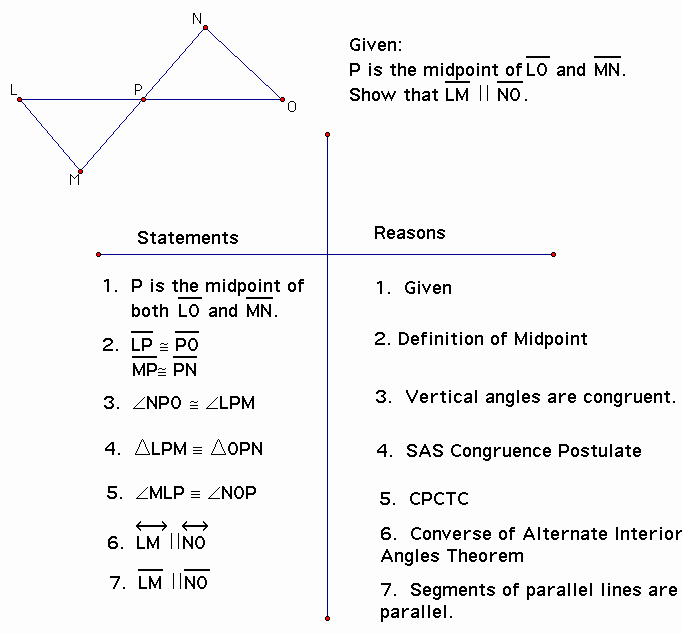

Same side interior angles are supplementary (sum to 180°).In order to solve these questions, students should be aware of the following angle relationships: These questions often ask students to solve for one or more of the angles created by the intersection. Other questions might show a set of parallel lines intersected by another line called a transversal line. In order to solve these questions, students should be familiar with the following equations: Some SAT geometry questions might ask you to find the distance between two points, or the halfway point between two sets of coordinates. In general, these SAT geometry questions cover: That’s because it is! However, as we’ve said a few times in this post, the way the SAT tests this topic is predictable.
#Proofs in geometry calculator download#
You can also download all of these tips and apply them to practice problems now, with our free SAT Geometry Guide. We take a deep dive into each of these content areas below. The main geometry topics that students can expect to see covered include: If you are short on time and/or having trouble with the earlier sections, focus on those first before moving on to this section. Remember that all questions on the SAT are worth the same number of points, and so it doesn’t make sense to waste minutes on difficult problems. Geometry problems tend to be some of the more time-consuming problems on the test, so it might make sense to save these for last. You must prove a value based off of what you know to be true. Don’t assume an angle measure or side length based off of how a picture looks. Keep in mind that figures are not often drawn to scale. You don’t want to try to keep everything straight in your head! If you are given a picture with certain side lengths and angles marked and others left as variables, make sure to physically write in new measurements as you solve for them. Sometimes something that sounds difficult in words becomes immediately apparent when you see it sketched out in front of you.

If a geometry question does not include an image, make sure to draw pictures. You will save yourself valuable time and mental energy if you’re not scrambling to find the right equation for a problem! 3) Draw pictures when possible This includes the formulas that are given in the reference box at the beginning of each math section: Second, you should take the time to make sure that you know all of the required formulas inside-and-out.

You’ll also be able to more efficiently attack the problems themselves. If you have a solid understanding of which concepts will be tested, then you’ll know which tools to pull from your arsenal. There are a few core strategies students should keep in mind when it comes to SAT Geometry. We’ll discuss this more in the next section of this post! Two things: know the content, and know how it is tested. SAT geometry questions frequently concern the following topics: Plus, these questions test a finite amount of geometry content. 3-6 Geometry questions on the Calculator section.2-4 Geometry questions on the No-Calculator section.Yet there’s some good news to this: these questions are only likely to make up about 10% of SAT math questions. SAT geometry is likely to appear in both of these sections. No-Calculator: 20 questions, 25 minutes.General Approach to SAT Geometry Questions.You can apply everything you learn in this post to the practice problems available in our SAT Geometry Guide. While these questions do cover a fairly broad scope, the topics are finite and should feel familiar after review. Plus, SAT geometry accounts for only a very small portion of the test.

There aren’t any proofs on the SAT, for one thing. For others, geometry might simply be that one area of math that simply never made sense!įortunately, SAT geometry is very different than geometry students learn in traditional classroom settings. This can be intimidating to a lot of students!įor many SAT test-takers, geometry can be a somewhat “dusty” concept, especially for juniors and seniors who haven’t studied triangles and circles for years. Test-takers are likely to encounter geometry questions on both of these. The SAT has two math sections: a no-calculator section (20 questions) and a calculator section (38 questions). Bonus Material: PrepMaven’s SAT Geometry Guide


 0 kommentar(er)
0 kommentar(er)
